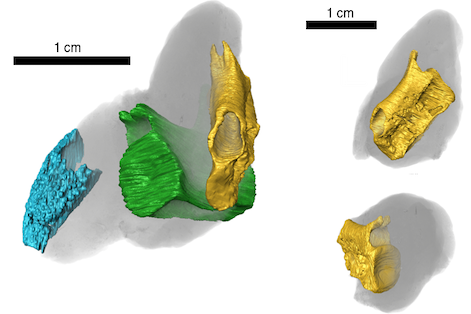Food Webs - Back to Basics
A correspondent has brought THIS ARTICLE to my attention. With great difficulty I avoid all scatological humour and tell you that it is about Rhaetian food webs in the Bristol area. The research material was coprolites from Chipping Sodbury. CT scans were taken of the coprolites and the contents (remarkably well preserved) identified.
The animals of the Rhaetian sea were all carnivores and they ate each other. The one rule was - If it is smaller than you, eat it!
The article, which is a precursor for a paper which will be published in the Proceedings of the Geologists' Association, is largely concerned with building a food web of the Rhaetian Sea. What I find fascinating is the preservation of the bones. Modern animals have stomachs which can dissolve bones. For these creatures going to the toilet must have been painful!
CT scan of coprolite specimen, BRSMG Cf15546, in different views, showing tuberculated bone (blue) from a fish skull, and two vertebrae from the tail of the marine reptile Pachystropheus, in yellow and green.
Marie Cueille, and Palaeobiology Research Group, University of Bristol

No comments:
Post a Comment